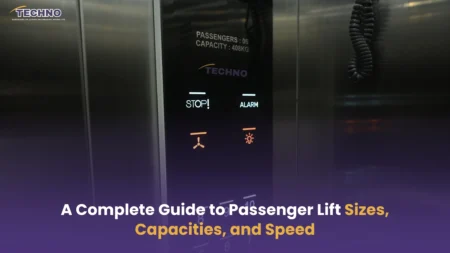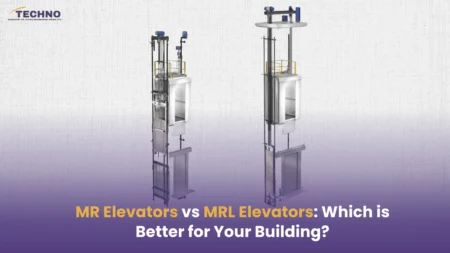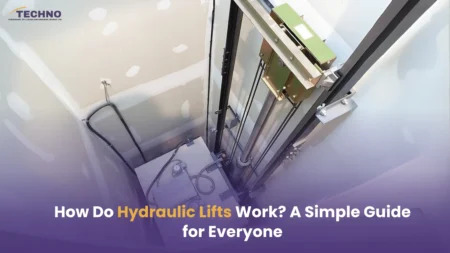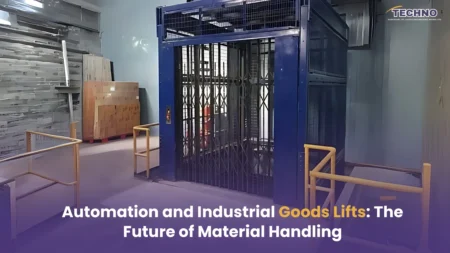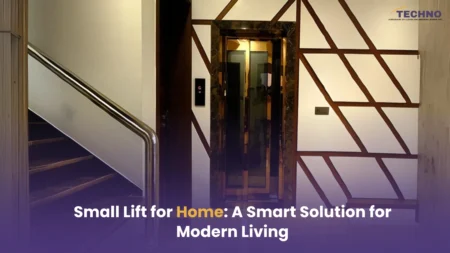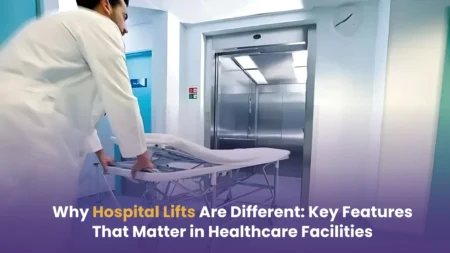Having been confined to factory warehouses and production units in the past, Hydraulic Lifts are now stealthily stealing the spotlight in modern homes, high-end boutiques, business centers, and luxury villas. The same technology that was once used to shift heavy machinery in factories is now offering effortless, safe, and stylish vertical mobility in spaces you may not even consider. Hydraulic systems today are not just about functionality; they represent a new lifestyle.
Let us look a bit more in-depth at how hydraulic lifts have developed and why they are becoming an increasingly preferred option outside of traditional industrial environments.
Overview of Hydraulic Lifts
Hydraulic lifts generate lifting force using fluid mechanics. A motor pushes hydraulic fluid into a cylinder, which pushes a piston upward to raise the elevator cab. They are commended for being smoother, more reliable, and requiring less pit and overhead than traction elevators.
This design makes them a prime option not only for heavy use, but for stylish home and light commercial applications where appearance and space are just as significant as performance.
Classic Industrial Application of Hydraulic Lifts
First, industrial hydraulic lifts were designed for harsh environments: factories, warehouses, car factories, and shipyards. Their ability to move massive loads with less space and infrastructure needs made them an essential part of industrial operations.
In these environments, attention was solely on function:
- Moving heavy goods between floors
- Supporting production lines
- Facilitating warehouse operations
Design, noise, and ride quality took a backseat; raw performance was the priority. Strength and simplicity made hydraulic lifts the unsung heroes of industry.
Shift Towards Residential and Commercial Use
As building designs evolved and vertical living became common, so did the need for practical, compact, and reliable elevator solutions. Hydraulic technology, with its simple yet powerful system, adapted easily.
Today, the residential hydraulic lift system is a highly sought-after solution for:
- Private homes
- Low-rise office buildings
- Medical facilities
- Small retail spaces
- Boutique hotels and cafes
Builders and homeowners are drawn to its ability to fit into tight spaces without needing extensive structural changes. In many modern constructions, it is no longer practical to build without factoring in personal mobility needs.
Hydraulic Lifts in Luxury Homes and Villas
The rise of luxury home elevators has made hydraulic systems even more relevant. Modern homeowners aren’t just looking for convenience, they demand aesthetics, safety, and bespoke design.
Hydraulic lifts for homes now:
- Blend seamlessly into architectural designs
- Offer smooth, quiet rides
- Come with luxury finishes like glass enclosures, premium metals, and customizable lighting
- Deliver a discreet but powerful mobility solution without dominating the space
In high-end villas and duplex apartments, a compact lift for home serves both lifestyle and accessibility needs, becoming an invisible yet integral part of sophisticated living.
Benefits Driving the Trend
Several key advantages are propelling customized hydraulic lifts into residential and boutique commercial spaces:
- Space-saving: A separate machine room is not required. The pump might be kept close by in a tiny cabinet or closet.
- Smooth Operation: Hydraulic home elevator solutions are perfect for homes because they provide a very smooth ride with few vibrations.
- Safety: Hydraulic lifts put user safety first with features like strong braking systems and manual lowering systems in the event of a power outage.
- Cost-Effectiveness: In low-rise buildings, hydraulic systems are affordable home elevators to install as well as maintain.
- Installation Simplicity: Hydraulic lifts require fewer construction modifications during installation than traction lifts, which lowers costs and project timelines.
- Low Noise Levels: These elevators run quietly, which is crucial for quiet homes, especially when using contemporary pumps.
Designers and builders appreciate these advantages when proposing home elevator options to their clients, marrying functionality with lifestyle upgrade.
Design Customization and Flexibility
Another important factor contributing to residential adoption is the broad design flexibility. Custom hydraulic lifts can be made to match interior decor, from elegant designs for historic villas to sleek styles for modern homes.
Customization options include:
- Transparent glass shafts for a floating effect
- Customized cabin interiors with wood, leather, metal, or glass finishes
- Designer lighting and accent features
- Touchscreen panels and smart home integration
- Varieties of door styles: swing, sliding, or collapsible
A lift that complements rather than detracts from the architecture can be designed thanks to the wide range of options available, which is crucial for luxury builds.
Real-Life Examples or Case Studies
1. Private Bungalow, Pune
A Pune modernist bungalow owner fitted a home hydraulic lift system to link the basement lounge area, ground-level living room, and roof-level sun deck. The system incorporated a glass roof enclosure to provide an open, light, unintrusive appearance.
2. Boutique Resort, Goa
A boutique hotel utilized budget home lifts to provide barrier-free access between the reception and the ocean-facing rooms. The selection of hydraulic technology made sure that there was minimal structural intervention, leaving the original heritage building character intact.
3. Urban Apartment Retrofit, Ahmedabad
In a 30-year-old residential complex, homeowners chose a small home lift with a hydraulic power system. It was installed within an existing stair shaft. It provided elderly residents with an affordable and effective mobility option without extensive structural redesign.
Each case reflects how hydraulic technology can accommodate a variety of site conditions and user requirements.
Adoption and Installation Difficulties
Despite their many benefits, hydraulic lifts have drawbacks.
- Restricted Travel Height: Traction elevators work best in five- to six-story buildings, so taller structures are usually a better fit for them.
- Oil Handling: To guarantee seamless operation and prevent leaks, hydraulic systems require routine oil checks and maintenance.
- Operating Speed: Although hydraulic lifts operate a little more slowly than high-speed traction elevators, this is rarely an issue in low-rise or residential environments.
- Temperature Control: For best results during severe weather, additional oil heating or cooling techniques might be needed.
A qualified installation and maintenance partner can effectively handle these difficulties, guaranteeing dependability and longevity.
Developments in Hydraulic Systems Technology
Technological innovation has greatly benefited modern hydraulic elevator applications:
- Hydraulics that are green: introduction of non-toxic, biodegradable hydraulic fluids.
- Efficiency of Energy: By modifying motor speed in response to demand, sophisticated pumps with variable frequency drives lower energy consumption.
- Compact Drive Units: Pump systems that are smaller and smarter now occupy even less space.
- Smart controls: Combining smart home appliances and building management systems to make monitoring and operation simpler
- Reducing Noise: Modern pump and valve technologies operate whisper-quietly, making them perfect for luxury homes.
Hydraulic lifts are now more sustainable and competitive than ever thanks to these developments.
Prospects for the Future: Entering New Markets
Hydraulic lifts have a bright future. Increasing demands consist of:
- installing accessible home elevators in hospitals, schools, and older communities.
- incorporating elevators into townships and mid-sized residential towers.
- expansion into semi-public areas such as clinics, museums, art galleries, and boutique shops.
- Supplying middle-class homeowners with reasonably priced home elevators as a component of intelligent, energy-efficient homes.
Demand will be further accelerated globally by trends like “aging in place” and accessible housing. This new trend will be led by hydraulic lifts because of their adaptability, reduced space requirements, and increasingly environmentally friendly profile.
Final Take
Hydraulic lifts have undergone an incredible journey from rough factory floors to the best living rooms. Now, they stand for something more than mobility; they stand for careful, forward-looking living.
Whether you are a builder looking to provide smarter solutions, a society decision-maker looking for dependable upgrades, or a homeowner dreaming of hassle-free living, investing in hydraulic lift installation is a step that marries functionality with sophistication.
At Techno Industries, we specialize in offering bespoke, cutting-edge solutions that not only address today’s requirements but also forecast tomorrow’s ambitions. An expertly designed hydraulic lift isn’t merely a feature; it’s an investment for the future.
Let’s build mobility solutions that move you literally and aspirationally.



